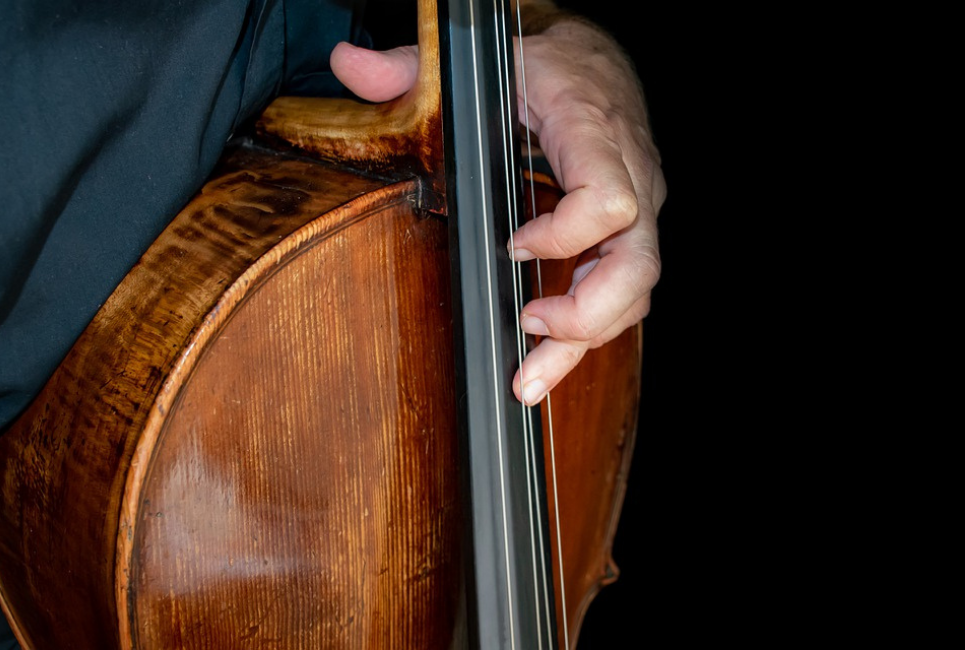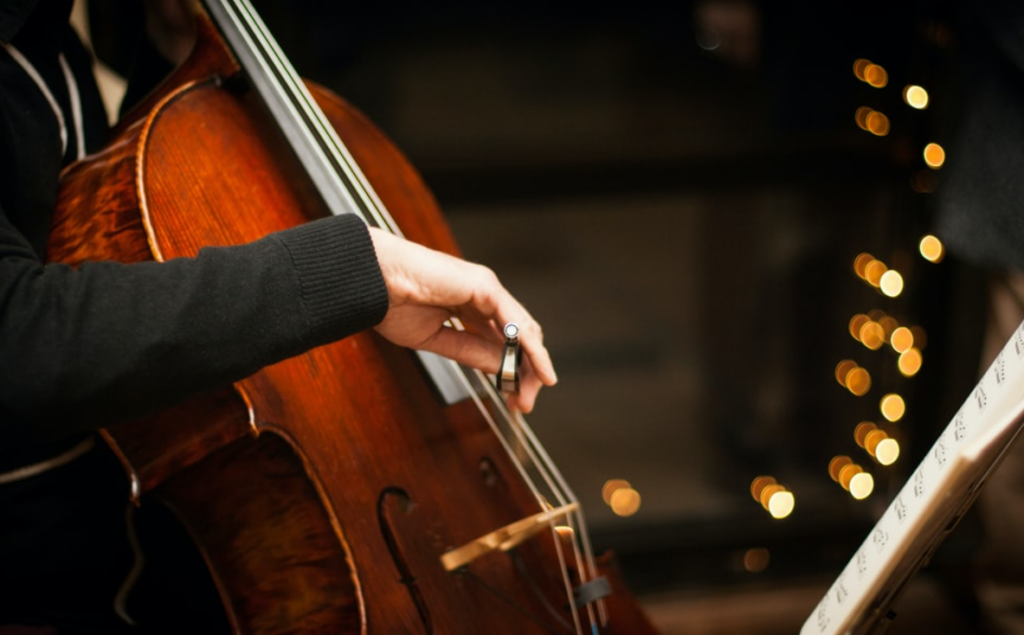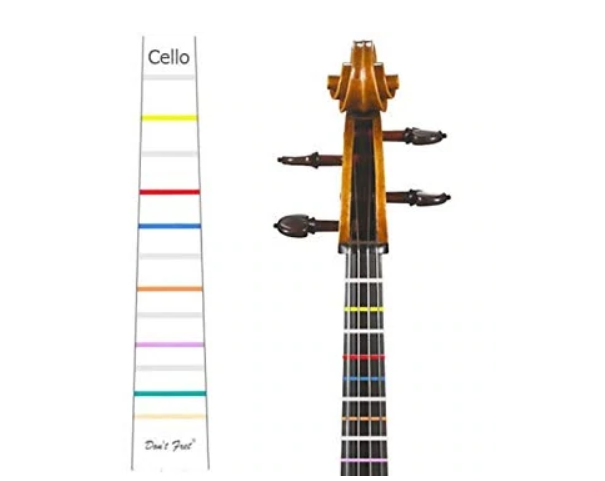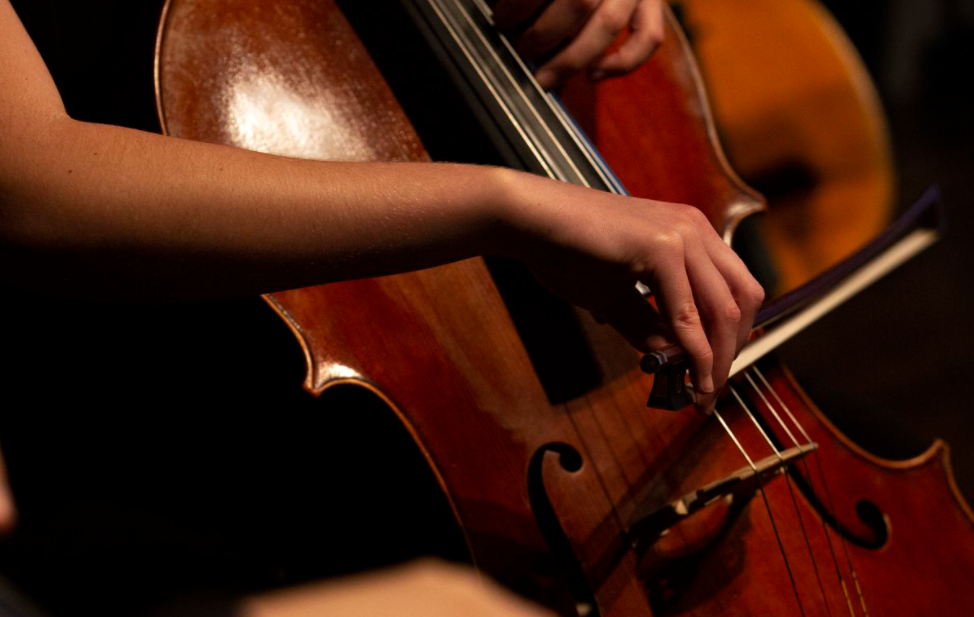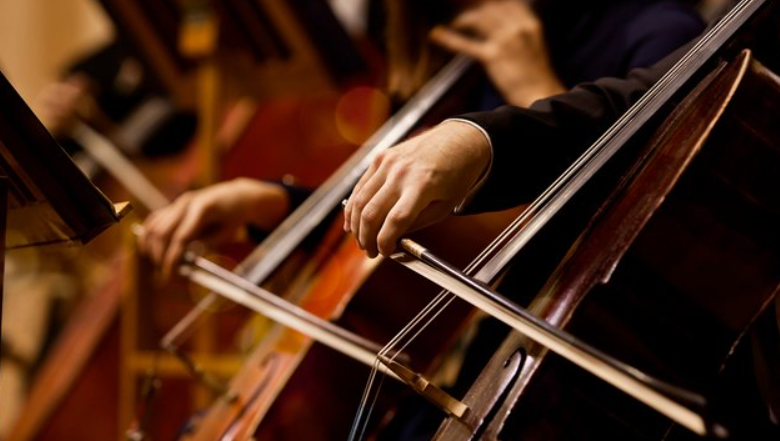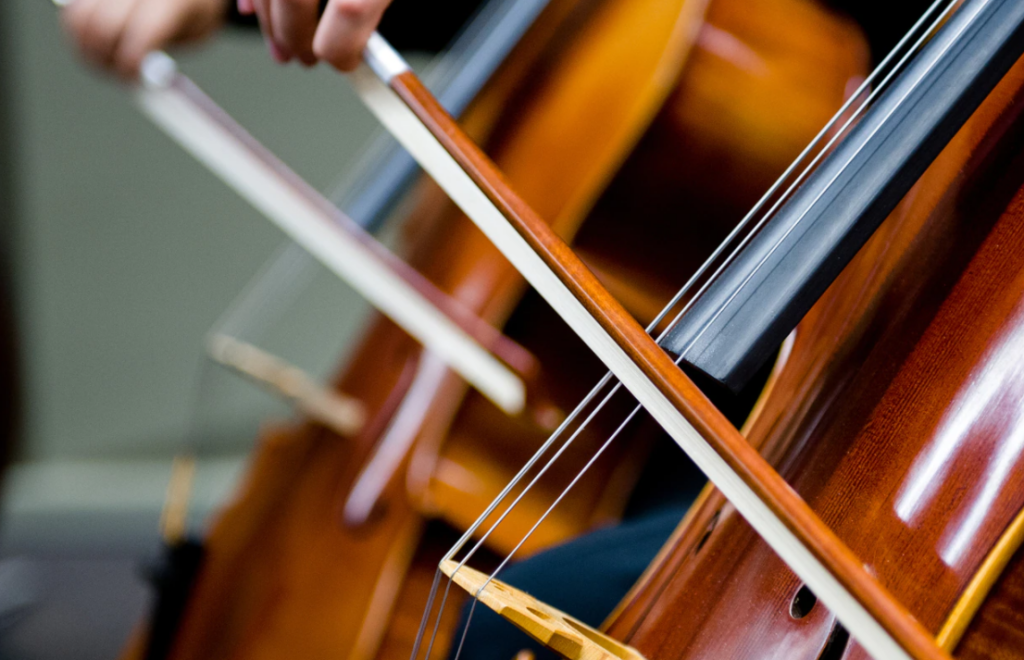- How to Find the Best 5 String Violins - April 19, 2022
- Top Violin Accessories to Consider - April 18, 2022
- Best Left-Handed Violins Guide - April 13, 2022
Summary: Knowing how to find the best cello fingerboard means knowing what quality material to use and what size will fit your instrument. The fingerboard is a crucial part of your cello, against which your fingers rest when pressing strings. Without the best cello fingerboard, you can’t produce a good pitch.
Whether you are interested in picking up a stringed instrument, are a beginner, or are an advanced player looking to replace or modify your cello, knowing how to find the best fingerboard is essential. The fingerboard is an integral part of your instrument, without which you cannot produce or moderate pitch, and yet it is an often under-appreciated part of the cello.
Parts of the Cello
If you play the cello, it is important to understand each of the different cello parts. This might not seem like it matters, but trust me when I tell you the sooner you learn, the easier it will be for you to improve your musical skill, communicate with others, and sound like a qualified musician. You will find it difficult to explain which parts of your instrument are broken or what replacement parts you need if you can’t identify the different parts by name.
If you lay your cello out on the ground and look at it from above, you will see the top, thin end called The Scroll. It is called the scroll because it curves like a wrapped scroll.
Directly beneath the scroll, you see the tuning pegs and the nut. These areas combined to form what is called the pegbox.
The following section, which connects to the pegbox, is called the neck. The neck is often used to refer incorrectly to the fingerboard as well. Technically, the neck is only the longer, thinner part exposed from the top of the cello’s body to the pegbox.
Resting under the neck is the fingerboard. This is typically black, slightly angled, resting underneath the strings.
The strings run from the pegbox over the neck, along the length of the fingerboard, up and over the bridge, and down to the fine tuners at the tail end of the cello. The small F-holes carved into the cello’s body are on either side of the bridge.
The best cello fingerboard ends, and the bridge begins if commonly called the “waist” of the cello. The waist is one part of the whole body. The top part is the “upper bout,” and the lower part below the waist is the “lower bout.” The waist, upper, and lower levels make up the body.
Another way to think of it is to divide it into the pegbox components, the body parts, and the other parts:
| Body |
|
| Peg Box |
|
| Others |
|
What is the cello fingerboard?
The cello fingerboard is a long piece of wood that runs down most of your instrument. It is slightly curved and typically made from hardwood that can withstand the tension and pressure of the strings.
Cello fingerboard facts:
| Length | An average of 61 centimeters |
| Width | An average of 64 mm wide at the bottom and 30 mm wide at the top |
| Material | Usually ebony |
| Purpose | Producing pitch |
When you play the cello, just as with other stringed instruments, the pitch is produced based on the string length and width. When you run your bow across the strings or pluck the strings, they vibrate. The string’s length changes when you press your strings against your fingerboard.
If you have ever looked at a guitar, you probably noticed the strips of wood or metal along the fingerboard. These are called frets, and they stop the guitar strings once a finger is pressed against them. Cellos do not have frets which makes it easier for cellists to control the pitch (but the downside is that it also makes it harder to play in perfect tune).
Sometimes beginners will place dots along the cello’s fingerboard to help guide their finger placement. But once you get a bit more advanced, you’ll know how to produce an accurate pitch just with muscle memory.
The Best Cello Fingerboard and the 7 Points Method
When I first learned the piano, I wrote the letters for each key with a marker. Many years ago, this was before you could just order stickers with different letters. My mother was not very happy, to say the least; apparently, I had used a permanent marker. The subsequent grounding did not prevent me from doing the same thing with my first cello, only this time, I used stickers (probably should not have been from my Lisa Frank collection) to mark where my fingers had to go.
A common method of learning where to place the fingers is called the 7 points method for beginners. With this teaching method, you divide the strings along your cello fingerboard into seven sections. These seven sections are used to reference all of the notes. Mentally dividing the fingerboard and the strings into seven corresponding harmonic points creates a mental sticker or dot instead of defacing your cello with Lisa Frank stickers.
The idea behind this particular learning method is to divide the strings into whole number ratios, based on a somewhat complicated idea that’s traced back to Pythagoras. You don’t need to know anything about this Greek mathematician to use the learning method.
Cellos are large instruments. Most cellists never use the entire length of the fingerboard. The upper positions for the C and G strings are challenging to reach and usually avoided. The more common areas of the cello fingerboard include seven sections for the A string and D string and five sections for the C string and G string.
How to Find the Best Cello Fingerboard
No matter the method you use for learning to play the cello, evaluating different fingerboards comes down to understanding the quality and craftsmanship that goes into this particular part.
As an advanced or professional musician, your high-quality cello is probably handcrafted. Handcrafted instruments are at the mercy of the manufacturer. Every manufacturer has slightly different preferences when it comes to fingerboards.
Size
The fingerboard is not the same width down the length of the piece. It starts slightly thinner at the neck and gradually widens until it comes to an end near the waist of the cello. The average width of the best cello fingerboard starts at 1.2 inches or 30 mm near the neck and eventually grows to 2.5 inches or 64 mm near the waist.
Asymmetry
The cross-section of the cello fingerboard is not entirely symmetrical. If you are looking at the front of your cello, the left part of the instruments or the C-string side will be slightly narrower than the right or A-string side.
Why? This asymmetrical design is intentional. This allows you to reach the lower strings while still keeping your wrist to add a natural angle. If the fingerboard were utterly symmetrical, it would be much harder for you to play all seven sections for all strings. Your wrists will thank you for the asymmetrical fingerboard shape.
Material
The body of your cello is usually constructed from Maple or Spruce, which are very soft, fragile woods. By comparison, the fingerboard is built from tough, durable wood. The most common is ebony, but another option is rosewood.
Recently, manufacturers have turned to more sustainable materials. For example, if you have a carbon fiber cello, you probably have a carbon fiber fingerboard. Carbon fiber reduces the overall weight of the cello by about 10%. Anyone who has played the cello knows it’s a vast and heavy instrument, so cutting off 10% of that weight is ideal. What’s more, carbon fiber is more sustainable and environmentally friendly.
When to Find the Best Cello Fingerboard
As you continue to play your cello, it will wear down no matter what material is used for your cello fingerboard. Over time your fingerboard naturally creates a very orderly pattern of ripples. If you rent a cello or purchase an antique, you might be able to see that pattern of ripples based on where the left hand’s fingers regularly rest. Directly under each string, you will typically find a minor groove as well. This groove is worn into the fingerboard along the length of each string location.
A trained ear will notice these changes in the fingerboard texture because they produce a buzzing sound. The strings also start to jar against the bumps, something you will feel.
You can choose to have your cello fingerboard repaired or replaced when this happens.
Repairs: If you opt for a repair, a luthier can use a process called truing or shooting to smooth out these ripples and grooves. This keeps the original fingerboard and prevents your strings from buzzing or catching in these grooves.
Bear in mind that the more you do this, the less material will be left. Suppose you have a cello fingerboard made of ebony after a few repairs. In that case, you might have sanded away a significant majority of your fingerboard. At that point, you will need a replacement.
Replacements: If you have used all the repairs available to you and your fingerboard is now worn down or otherwise damaged, you will need a complete replacement. Finding the best cello fingerboard means finding an appropriate size and material. Nothing prevents you from replacing an ebony cello fingerboard with a rosewood cello fingerboard or switching to a carbon fiber fingerboard. Just make sure you have a professional do the replacement.
In other situations, the fingerboard might come partly unglued from the neck. If this happens, you will notice an increase in the string height and a slight buzzing sound. If you don’t get it fixed immediately, it can cause the fingerboard to warp under the increased string tension. This is a tricky process requiring all of the warped pieces to be removed, excess or older glues, and all parts re-glued properly.
Product Recommendations
Fingerboards on new Cellos are precisely carved for that instrument. If you need a repair or replacement, you will take the cello to a luthier. This means that, for the most part, cello fingerboards are easy to acquire online. With some diligent research, I was able to find two fingerboards that I would recommend to someone who needed to buy one online instead of from a luthier or is trying to build their first cello as a project. Fingerboards are like care parts. Most people will take their cello to a luthier if it needs work done like this, just like most people take their care to a mechanic for serious work.
Maderas Barber
Maderas Barber is a seller of tonewoods and other accessories. They sell a variety of fingerboards at different levels and price points. They are all made from ebony but are of various grades, which means the wood and care taken into planning it. AAA Fingerboards are the best you can get from them, while B grade is the lowest. If you are building your own cello, you will be able to pick up everything you need to complete that project here.
Pros
- Comes from quality known sellers of tonewoods and other cello making products
- Comes in a variety of grades so you can get what you need for your cello or project
- Inexpensive even for the higher quality ones
Cons
- Can’t see it before you buy
JinQu Cello fingerboard
The JinQu Cello fingerboard is conveniently located on Amazon. This fingerboard is made from 100% ebony and pre-shaped, so it’s ready for final planning and fitting. Overall it’s a beautiful fingerboard for someone trying their hand at building a cello. It’s also more affordable than the fingerboards at Maderas, but the quality is a little less. Overall a luthier would probably not buy this fingerboard, but an enthusiast would.
Pros
- 100% ebony
- Pre-shaped and ready for final fitting
- Inexpensive
Cons
- Not as high of quality as Madera’s fingerboards.
FAQ
Answer: The length of a cello fingerboard is based on each instrument. No two are precisely the same. However, they are usually just under 2 feet long, or 61 cm. The width is usually 2.5 inches or 64 mm at the bottom of the fingerboard and 1.2 inches or 30 mm wide at the top where it is part of the neck.
Answer: How often you have to replace the best cello fingerboard depends on how often you play and how strong your left hand is. You won’t have to worry about this for many years if you are a beginner. Suppose you are a more advanced or intermediate player, and you regularly perform in practice every day. In that case, your increased left-hand strength and practice time will expedite the need for repairs or replacements.
Answer: It is essential to wash your hands before playing the cello to avoid unnecessarily transferring debris or oils to the fingerboard. You can also keep your eyes peeled for damage or wear and tear. When you see it, contact a professional for repairs and replacements. You can also prevent the fingerboard from separating with the neck by keeping humidity under control and not exposing your cello to regular, extreme temperature fluctuations.
Bottomline
Overall, knowing how to find the best cello fingerboard means picking a durable material and a size that can be fitted to your cello. Every manufacturer is different, so you should use a professional luthier to get the part repaired or replaced when the time comes. Taking care of your instrument can increase longevity, and getting repairs done regularly when grooves or ripples can extend the lifespan of your cello fingerboard.
Looking for more interesting readings? Check out:

